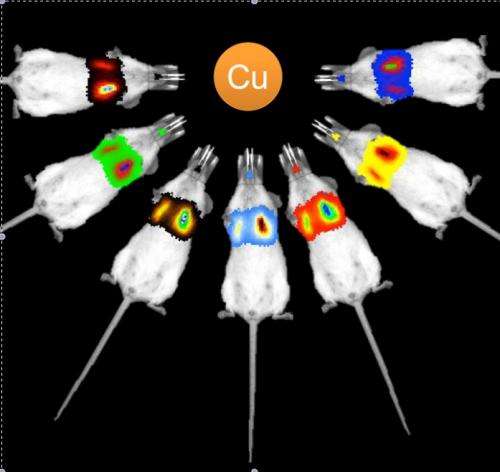Fungus uses copper detoxification as crafty defense mechanism

(Phys.org) —A potentially lethal fungal infection appears to gain virulence by being able to anticipate and disarm a hostile immune attack in the lungs, according to findings by researchers at Duke Medicine.
Defense mechanisms used by the fungus Cryptococcus neoformans enable it to lead to fatal meningitis, which is one of the opportunistic infections often associated with death in HIV/AIDS patients or in organ transplant recipients, diabetics and other immunosuppressed patients. In describing the complex process of how C. neoformans averts destruction in the lungs of mice, the Duke researchers have opened new options for drug development.
"Very few antifungal drugs are effective, so we need to identify the Achilles' heel of these fungal pathogens," said Dennis J. Thiele, PhD, the George Barth Geller Professor of Pharmacology and Cancer Biology at Duke University. Thiele is senior author of a study published March 13, 2013, in the journal Cell Host & Microbe. "With this research we may be closer to understanding how this fungal pathogen evades death in its host, and hopefully be closer to finding effective treatments."
Found in the environment, C. neoformans spores can be inhaled and cause infection, particularly when people have weakened immune systems. The Centers for Disease Control and Prevention estimates that worldwide, C. neoformans causes 1 million cases of meningitis a year among HIV/AIDS patients, with nearly 625,000 deaths.
Thiele and colleagues focused on the interplay between C. neoformans in the lungs of mice and the host's immune system, which mounts an immediate attack against the pathogen.
The immune response is led by macrophages, which circulate in the blood stream and engulf invading microbes to destroy them. The macrophages are essentially tiny torture chambers for pathogens, using hostile conditions and toxic substances to kill invaders.
Among the substances inside the macrophages is copper, a mineral the body needs for normal cognitive function and development, but also known to have antifungal properties. In the face of a pathogenic invasion of fungal spores, the macrophages begin concentrating more copper within their torture chamber as one of the body's antifungal weapons.
The Duke researchers found that lethal strains of C. neoformans have two ways of battling against the toxicity of the copper. First, the pathogen turns on genes that make proteins to protect it from copper toxicity, so even when exposed to the hostile copper environment in the macrophages, it survives.
Then a second defense mechanism is also deployed. The fungus, sensing the copper-rich environment, triggers a response that shuts down the host's ability to pump more copper into the macrophages – defusing this weapon in the immune system's arsenal.
"With these two mechanisms, C. neoformans can defend itself by sequestering the copper, and somehow communicate to the host macrophage, commanding that it shut down the copper pumps," Thiele said.
Thiele said studies are now focusing on how antifungal agents might thwart the pathogen's two defense systems. "The detoxification machinery might represent an effective drug target," Thiele said.
Journal information: Cell Host & Microbe
Provided by Duke University


















